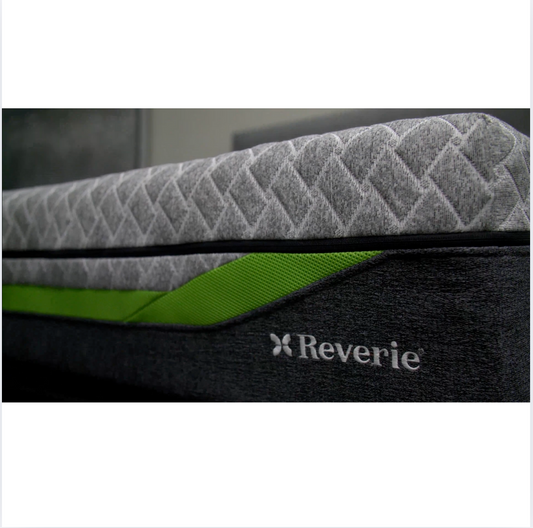
What to Do When Your Mattress Is Too Soft or Too Firm
Share
Remember the story of Goldilocks and the three bears? She tried three different beds, trying to find one that wasn't too hard or too soft, but "just right." Turns out, she was really on to something.
Of course, "just right" bed firmness is a subjective thing about which opinions will vary wildly, and—as we saw with Goldilocks—most people would have to lie down on the bed before they could even say what "just right" means for them. So how do you find your "just right" when it comes to mattresses? And what can you do if you realize that the mattress you have doesn't fit the bill?
Why mattress firmness matters
Why should you care about how firm your mattress is? Because the right firmness can help prevent back pain and protect the quality of your sleep. Lying with your spine in a crooked, unaligned position for eight hours every day is a big contributor to back pain and can also ruin the quality of your sleep. This is why finding a mattress with the right firmness for you is so important.
What's better—a firm mattress or a soft mattress?
Firmer mattresses provide better support, but they can also apply too much pressure to certain points of the body, leading to discomfort and pain. Soft plush mattresses, on the other hand, can cause your spine to sink into the mattress, which can lead to spine alignment issues down the road.
Ultimately, there's no straightforward answer about how to choose a mattress or whether a firm mattress is better or worse than a soft one. Spend some time doing a little research and a thorough mattress comparison before making a decision. Each person's preference will vary based on a multitude of factors, including height, weight, age, and whether or not you have back pain or other health considerations. Your sleeping position will also play a role:
- Side sleepers tend to need softer mattresses that don't put too much pressure on the shoulders or hips.
- Back sleepers are better off with a medium-firm mattress that supports the low back without pushing too much on the spine.
- Stomach sleepers require a firmer surface that prevents the body from sinking into the mattress and collapsing the spine.
To make it all even more complex, your firmness needs may vary over time as injuries, pregnancy, or weight fluctuations change your sleep needs.
How to deal with a too-soft or too-firm mattress
If you come to the realization that your mattress is too firm or too soft, the best thing to do is to buy a new mattress. Of course, finances or other circumstances don't always allow for that. In a pinch, here are some makeshift solutions for remedying your current mattress firmness:
- If your mattress is too soft, try slipping some plywood boards between the mattress and the box spring or the bed frame. This will add some extra support.
- Try a mattress pad or mattress topper. Pillow-material mattress toppers can help soften a too-firm mattress, while thick pads or firm mattress toppers can add some more support.
- Consider room temperature. Some mattress materials, like ones made from 100% memory foam, can become softer in warmer rooms, so try adjusting your thermostat to see if it makes your mattress more to your liking.
- If your mattress is too soft and it's two-sided, try flipping it. The unused side will often be firmer.
Adjustable mattresses
A better solution for finding your best mattress is to choose an adjustable latex mattress. As we outlined above, everyone requires different levels of firmness- and what's more, you need different levels of mattress firmness for different parts of your body, and all these needs are subject to change throughout your life. Because of these variables, choosing one level of firmness for your whole mattress just doesn't make sense.
That's where adjustable mattresses come to the rescue. In the case of Reverie®, each of our latex mattresses is composed of individual DreamCell™ foam springs that come in three levels of firmness: firm, medium, and soft. Our Sleep Specialists help customers determine the precise configuration of these DreamCells to best support each area of their body—so their shoulders can rest on a soft surface while their low back presses against a firm one, for instance. In addition, these DreamCell foam springs can be easily reconfigured at any time (we're talking under 20 minutes) to respond to any changing sleep needs. The individual natural latex cells also allow for different firmness levels on each side of the bed, meaning back sleepers and side sleepers can rest side-by-side, each with the support he or she needs.
Now we can't speak for Goldilocks, but that sounds "just right" to us
